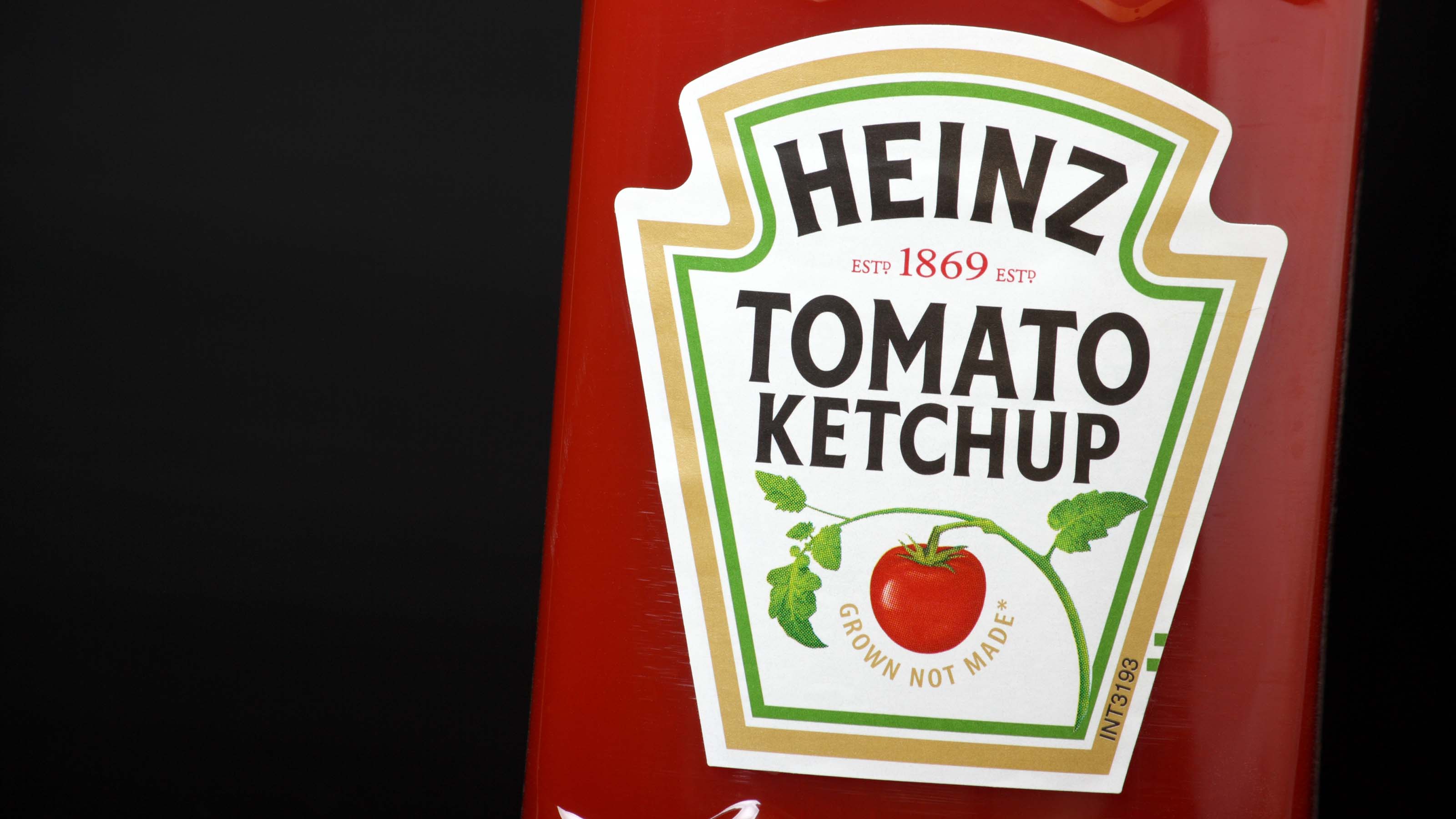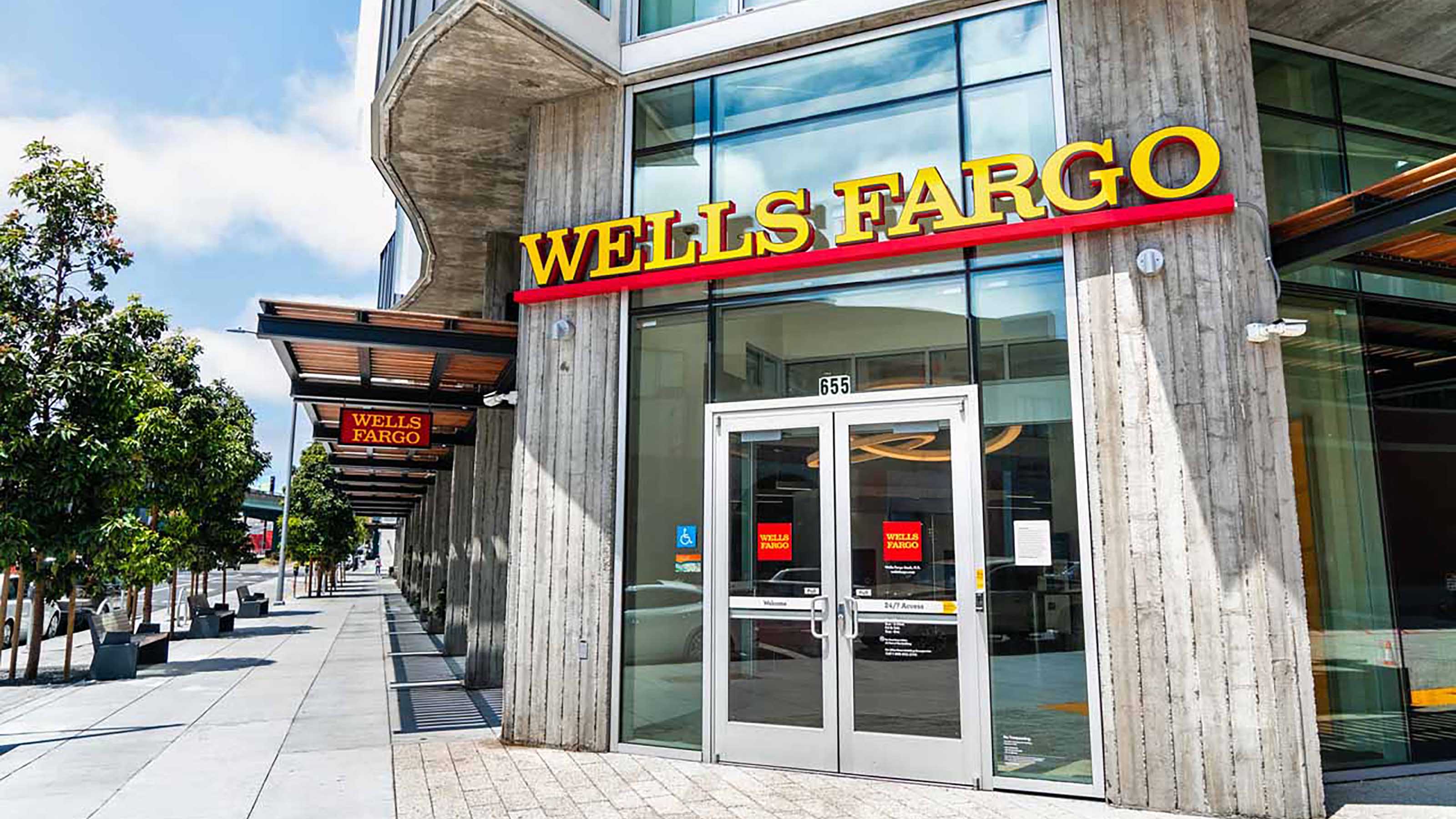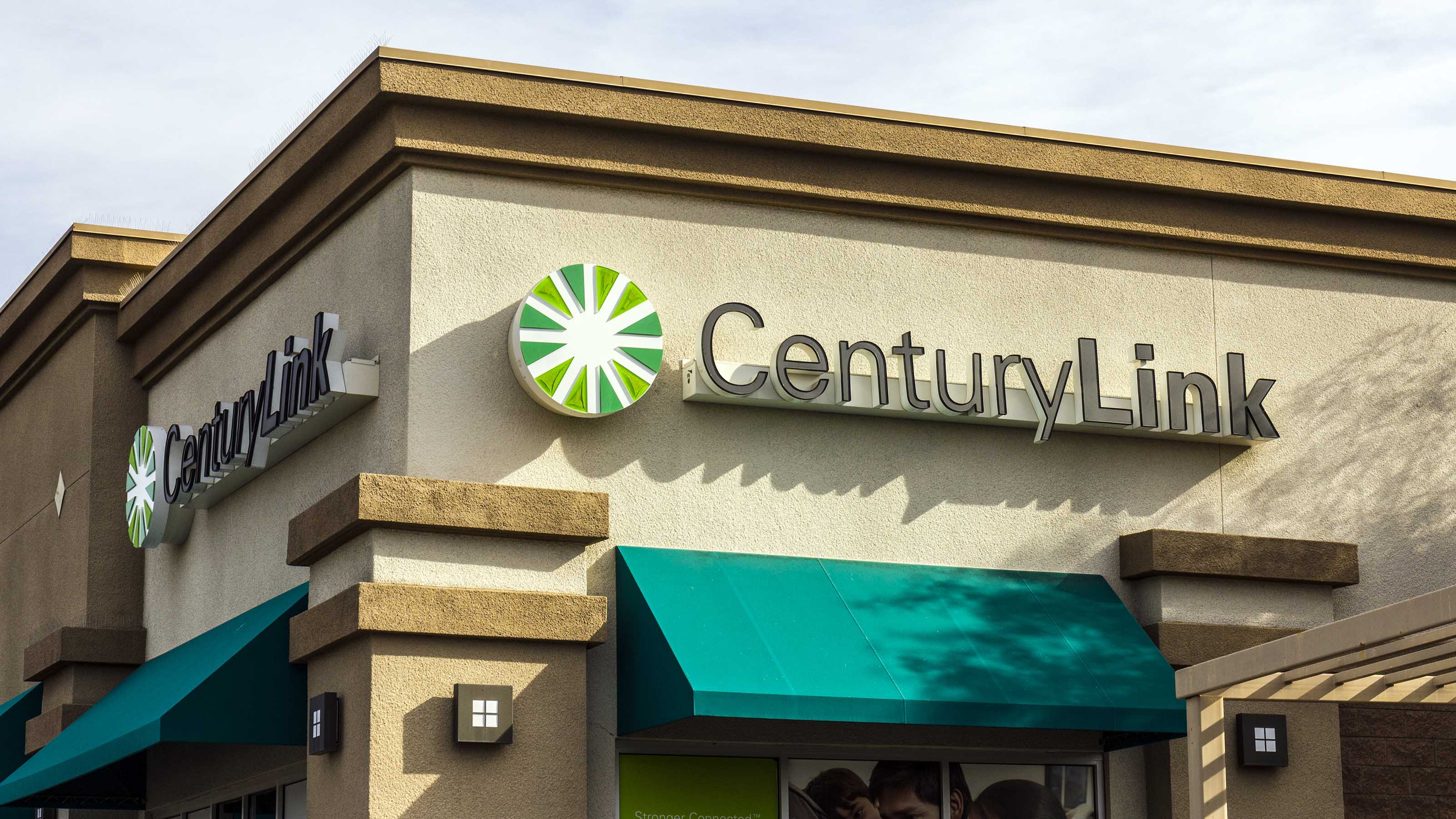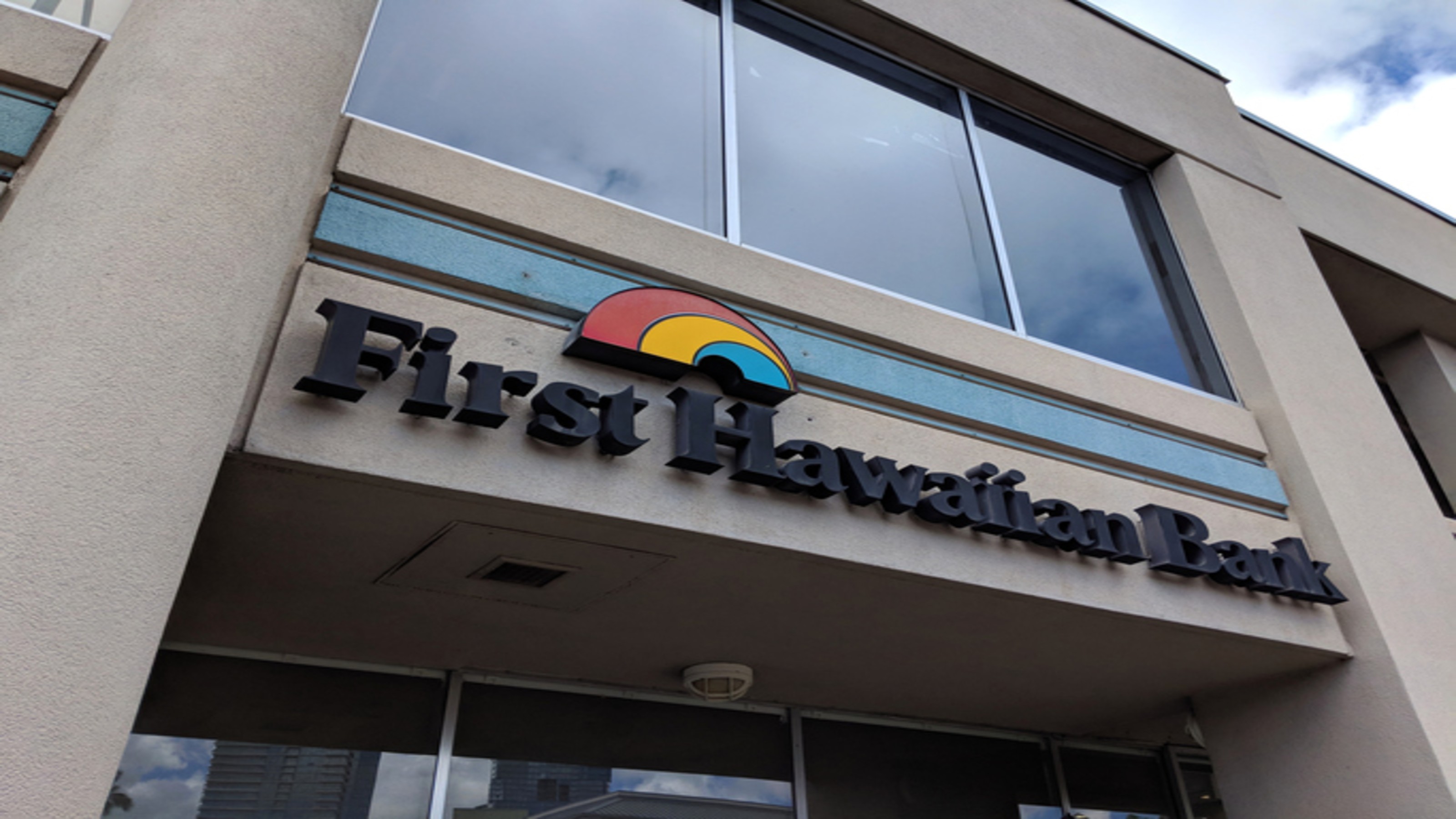15 Dividend-Paying Stocks to Sell or Avoid
Dividend stocks often act as a store of safety, but these 15 picks look like risky plays regardless of their payout programs.


In this volatile market, many investors are looking to dividend-paying stocks to hedge their bets in equity markets. That's partially because the regular income delivered from dividends can help provide a measure of stability. That's also because the sectors that tend to be the most dividend-rich also tend to be relatively less volatile thanks to more reliable revenue trends.
However, that is not always the case. Particularly in the wake of the coronavirus pandemic that has upended what we once thought was "normal" economic activity, it's important to take a discerning view of any dividend-paying stocks rather than just chase high yields.
After all, the quickest way for a stock to double its dividend yield isn't to come up with a ton of profits to increase payouts by 100%. Rather, it's for its share price to be slashed in half – something that normally only happens after Wall Street sours on the business, usually for good reason.
Here are 15 dividend-paying stocks to sell or at least avoid right now. This isn't to say they won't someday become buys again. But at the moment, they all face their own unique challenges. They also all feature comparatively negative coverage from analysts, troubling scores from the DIVCON dividend-health rating system, and/or discouraging share-price momentum.
In addition, a few of these stocks pay dividends that have been reduced recently, while a few others sport payouts that might not be sustainable if current profit trends persist.
The Pros' Picks: 9 Stocks to Sell Now
Data is as of Oct. 27. Dividend yields are calculated by annualizing the most recent payout and dividing by the share price.

Kraft Heinz
- Market value: $37.5 billion
- Dividend yield: 5.2%
With a decline of roughly 25% in 2019 while the S&P 500 had quite a good year, you might have thought the worst would be over for Kraft Heinz (KHC, $30.68), especially considering that COVID-19 has prompted a big boost in consumer staples sales – particularly packaged foods.
But while other similar brands have performed admirably in 2020, KHC is sitting on a single-digit loss year-to-date.
That's because the crippling debt load taken on by the $36 billion deal to merge Kraft and Heinz in 2015 continues to weigh on performance even years down the road. At the time, investing icon Warren Buffet called it "my kind of transaction," and after an instant pop of more than 20% for Kraft stock, in which he was a large investor, you could understand that sentiment in the moment.
But poor performance since then has been driven by deep cost-cutting to balance the books, which has left the product line behind current consumer tastes. Even worse, there also was a high-profile SEC investigation that resulted in deep write-offs and KHC restating three years of financials.
Said Buffett years later: "I was wrong (about KHC). ... We overpaid for Kraft."
Income hunters looking for bargains in dividend-paying stocks might be sniffing around Kraft shares, which trade at roughly one-third of their peak post-merger pricing in 2017. But as history has shown, if you think things can't get any worse for KHC stock, you might be sorely mistaken. After a dividend cut to just 40 cents per share in 2019, this stock's payouts might be a bit more sustainable – but even if these distributions stick, they can't alone offset the deep declines we've seen in recent years.

Macerich
- Market value: $1.0 billion
- Dividend yield: 8.7%
Brick-and-mortar retailers were already facing plenty of pressures in the age of e-commerce competition. Then, when the pandemic hit and kept shoppers at home – and even more reliant on internet transactions than ever – things went from bad to worse.
While not a direct retailer itself, Macerich (MAC, $6.94), a real estate investment trust (REIT), is closely tied to this painful industry trend, given its 51 million square feet of real estate in 47 regional shopping centers across the U.S. And as you can imagine, as its tenants suffer from slumping sales and close their doors, it is weighing on MAC financially – both in lost revenue as well as falling rental prices for those tenants who remain.
Macerich was forced to slash its dividend from 75 cents per share to just a dime for its second-quarter payout, then raised it to 15 cents for Q3. But it still offers a giant yield of nearly 9% thanks to 90% share-price declines since the start of 2017. However, earnings per share are in the red through the first half of the year, and funds from operations (FFO, an important REIT profitability metric) are well off from this point last year.
"Despite the improving rent collections, we think cost control has to remain paramount, along with the board reconsidering whether dividends, in excess of REIT minimums, are worth the cash outflow," writes Piper Sandler's Alexander Goldfarb, who rates the stock Underweight (equivalent of Sell). "Given the amount of debt to be addressed, we believe cash flow is best used for deleveraging."
The bottom line remains the bottom line for this heavily shorted stock, with long-term pressures on retail real estate working against Macerich.

Wells Fargo
- Market value: $90.2 billion
- Dividend yield: 1.8%
In the U.S. financial sector, there is perhaps no stock more tarnished currently than Wells Fargo (WFC, $21.82).
For starters, it's important to recognize that the bank has always had a much more commercial approach than other financial giants like JPMorgan Chase (JPM) that boast large investment operations. That means WFC is acutely sensitive to consumer and business lending trends, which frankly have been hit pretty hard by the coronavirus and resulting economic downturn.
That by itself should be enough for investors to be wary in the current environment. But it also has suffered from a string of self-inflicted wounds and suspicious activity, from the 2016 revelations that millions of fraudulent accounts had been opened by unscrupulous staffers, to the more recent scandal that resulted in 100 employees being fired amid allegations that they lied to obtain personal small business loans earmarked for coronavirus relief.
It doesn't stop there. In Wells Fargo's latest earnings report, revenues and profits continued to sag dramatically. And with interest rates already near historic lows and the pressures of an economic downturn making the chance of any future rate hike slim, the financial sector broadly, and WFC in specific, is unlikely to see a change in fortune any time soon. No wonder Warren Buffett sold off 26% of his WFC stake in the Berkshire Hathaway (BRK.B) equity portfolio.
Despite all that, Wells Fargo doesn't even offer up a yield that's competitive with similarly battered dividend-paying stocks. It pays no better than your average S&P 500 component, giving investors even less reason to bet on WFC here.

Lumen Technologies
- Market value: $9.8 billion
- Dividend yield: 11.2%
The telecom sector has long been an uninviting place for smaller players, given the fact that consumers demand reliable, lightning-fast connections these days. That demands a constant flow of cash both to maintain a network as well as to upgrade it, which smaller firms might not be able to support as easily as better-capitalized firms with strong credit ratings.
Lumen Technologies (LUMN, $8.96), which recently changed its name from CenturyLink, is a perfect example of the challenges these smaller telecom stocks face. With 4.6 million broadband internet subscribers and a legacy business of phone landlines, it's not terribly large. The company has done its best to expand and stay relevant through buying other firms, however, including a host of acquisitions that have targeted digital services – chief among these being a $25 billion deal for internet service provider Level 3 in 2016. But these deals clearly take serious cash, and that cash has come at the cost of investment in next-generation infrastructure.
Lumen's long-term debt has ballooned from $18 billion or so in 2016 to about $31 billion at the end of the most recent quarter. At the same time, LUMN has persisted in trying to deliver a generous dividend to shareholders that is currently running at $1.00 per share annually – comfortably under its earnings target of $1.30 or so per share on the year, but not exactly leaving much wiggle room for future growth or investment. That dividend also is less than half of what it paid just two years ago.
Lumen isn't in danger of going under, but it's not exactly the scaled-up and well-capitalized kind of telecom that low-risk dividend investors traditionally have chased. While a name change from CenturyLink might distract some people, investors shouldn't forget that this was among the sector's worst-performing stocks last year with a 13% loss, and it has shed more than a third of its value in 2020.
7 Best 5G Stocks for the Communication Revolution

Newell Brands
- Market value: $7.3 billion
- Dividend yield: 5.4%
Another dividend-paying stock that features lackluster growth prospects alongside debt loads that have inhibited operations is storage products company Newell Brands (NWL, $17.19). But what makes this stock stand out as particularly problematic is its mishmash of products and business lines that add inefficiency to the mix.
To be clear, Newell does have the benefit of powerful brands like Rubbermaid storage bins, Elmer's Glue, Sharpie markers and Crock-Pot appliances that will serve it well now and well into the future. This is a firm with soundly profitable operations, and far from a crippled company teetering on the brink of disaster.
But that said, the numbers simply don't make Newell a very attractive bet right now. Specifically, Wall Street's revenue forecasts for NWL in fiscal 2021 average out to roughly $9.5 billion – in line with its top line from fiscal 2017. Meanwhile, Newell, which has about $5.8 billion in long-term debt versus just $620 million in cash and long-term investments, has been losing standing with ratings agencies. Standard & Poor's downgraded NWL's credit rating to junk territory late last year.
With shares of Newell Brands down more than 60% from their 2017 highs and still well in the red in 2020, the risks of holding this consumer name should be clear and give pause to investors seeking out dividend-paying stocks.

Invesco
- Market value: $6.4 billion
- Dividend yield: 4.4%
Asset manager Invesco (IVZ, $13.97) is the brand behind some fairly popular ETFs, including the widely held Invesco QQQ Trust (QQQ) that is benchmarked to the Nasdaq-100 and is a mainstay of any investor interested in large-cap tech stocks.
But just because IVZ has a few funds you might recognize or find value in doesn't mean that the parent company is a strong investment.
The long-term trend of investors moving into low-cost index funds tends to be broadly working against Invesco. The firm has a host of niche offerings that look at smaller subsectors or momentum-driven and "smart beta" strategies, but aside from the flagship QQQ fund, it has just one other ETF in the top 100 offerings as measured by assets.
It is simply not in the same league as ETF families such as Vanguard, iShares or SDPR.
With each passing day, the divide only widens – and in part because of this trend, Invesco shares are trading at roughly one-third where they were back at their early 2018 highs. Also, like some of the other dividend-paying stocks on this list, Invesco was forced to cut payouts earlier this year. It now pays 15.5 cents per share every quarter – half of the 31 cents it paid at the start of 2020.

Carpenter Technology
- Market value: $839.8 million
- Dividend yield: 4.6%
Don't let Carpenter Technology's (CRS, $17.49) name fool you. This firm manufactures specialty metals, including titanium and stainless steel alloys, as well as metal powders and parts used by the aerospace, defense and industrial sectors, among others. These products certainly have their place, but they certainly aren't as dynamic – or as high-margin – and consumer gadgets or cloud computing solutions.
Carpenter has faithfully stuck to its 20-cent quarterly dividend in 2020, declaring recently it will finish the year with another such distribution in December. But the numbers show that it is digging significantly into reserves to accomplish this feat. This manufacturer's revenues are set to plunge about 20% compared with 2019, and it's headed for a significant net loss in 2020.
While CRS is projecting it will claw back some of those losses in 2021, it still might have to deal with the financial impacts of this economic downturn for some time.
Shares have lost nearly two-thirds of their value this year, and they have been relegated from the S&P MidCap 400 Index to the S&P SmallCap 600. Despite its low prices, however, a consensus Hold rating on Wall Street shows that the pros don't think this short-term trend is suddenly about to reverse.

Olin
- Market value: $2.6 billion
- Dividend yield: 4.8%
Specialty chemical corporation Olin (OLN, $16.63), at less than $3 billion in market value, is a small player in an industry where mega-corporations and economies of scale are the norm. Particularly after the mega-merger and subsequent restructurings of Dow (DOW) and DuPont de Nemours (DD), there isn't a heck of a lot of space for little guys like Olin.
What makes OLN even more troublesome for income investors looking for a reliable revenue stream is that this firm isn't just in the business of specialty bleaches and chorines. Its Winchester ammunition segment accounted for 11% of fiscal 2019 sales, and unlike sleepy specialty chemicals sales, ammo can see big volatility from one year to the next.
That uncertainty would be a red flag even if Olin was profitable at present. But the stock is running significantly in the red this year and projected to operate at a loss again in fiscal 2021, so there are real continuing risks here.
As far as dividend-paying stocks go, OLN is at least consistent; it has stubbornly held on to its 20-cent quarterly dividend for several years. But its stock has lost roughly half its value since 2018, and it appears too risky to trust for the dividends alone.

Santander Consumer USA Holdings
- Market value: $6.4 billion
- Dividend yield: 4.2%
Santander Consumer USA Holdings (SC, $20.93) is a specialized finance company that is primarily focused on vehicle financing. Needless to say, with car sales down about 20% just a couple months ago, this is not an easy business to be in right now.
Aside from fewer loans out there, the credit SC has extended is increasingly looking risky as the pandemic upends the repayment plans of many consumers. When you're seeing reduced hours or you're unemployed, it's hard enough to pay for your car. But when there's no place to drive it to even if you could, why bother staying current on your loan?
Some reports have tried to stress that consumer credit metrics have bounced back a bit, but it's important to remember that the mid-year stimulus boost to affected borrowers played a big role – and with big questions about future assistance, there should be big questions about Santander, too.
Even a significant third-quarter earnings beat wasn't enough to sway the bulls.
"Going forward, management was a bit dovish on the credit outlook, particularly in the first half of 2021," writes Janney's John Rowan, who maintained a Neutral rating on shares. "With used car values still high, but well off their summer peaks, recovery rate will trickle back down."
Piper Sandler's Kevin Barker stayed put at Neutral too, writing, "Overall, a very strong number and should support forward estimates, but we believe this run rate will be difficult to sustain."
The stock has stabilized from its early 2020 lows, but there is little reason for income investors to take a flier on SC right now considering the current risks. Especially considering its 22-cent quarterly dividend far outstrips the 37 cents per share Santander Consumer is expected to generate in per-share earnings this year.

HollyFrontier
- Market value: $3.0 billion
- Dividend yield: 7.5%
Refineries are a difficult industry within the energy sector, taking raw crude oil and turning it into usable petroleum products for businesses and consumers. They are sensitive both to input costs determined by the price of oil, as well as output pricing determined by how much they can charge for the goods they produce including gasoline and petrochemicals.
HollyFrontier (HFC, $18.57) is a fairly substantial player in the refinery space, focusing on gasoline, diesel and jet fuel. It owns and operates five refineries with a combined crude oil processing capacity of approximately 457,000 barrels per day. HFC, like most of the rest of the sector, was knocked down hard in February and March. But it roughly doubled off the bottom in just a few months as investors noticed how cheap oil had gotten at the same time many predicted a rebound in demand for refined products.
But improving margins weren't meant to last, as crude oil prices have steadily risen back to $40 a barrel. And while analysts were quick to pounce on potential of lower input costs, they've since become more circumspect as the airline industry and automobile travel continues to remain incredibly depressed and weigh on demand.
Throw in the long-term challenges of climate change and a general global transition away from petroleum products, and it's simply difficult to lump HFC in with other dividend-paying stocks with a long, bright future. While swing traders should feel proud for the big gains made earlier this year, its near-term prospects look decidedly glum.
And with a deep loss projected this year and expected earnings of just 83 cents next fiscal year, the $1.40 per share in dividends it pays out across the year could be at risk.

Equity Residential
- Market value: $18.5 billion
- Dividend yield: 4.9%
Equity Residential (EQR, $49.69) is a REIT that focuses on rental apartment properties in urban and high-density communities. With more than 300 properties and about 80,000 total units in key markets that include New York, San Francisco and Denver, it's easy to see why investors had long thought this slow-and-steady real estate play was all but a sure thing.
Of course, that was before the pandemic hit. Not only has an elevated unemployment rate created challenges with tenants making rent, but the broader trend of telecommuting and public health concerns around public transit have made these hip urban centers permanently lose some of their luster. And even though renting out apartments in expensive markets like San Francisco once seemed like a license to print money, it now seems increasingly unlikely that EQR will be able to command the same pricing power it once did.
We've already seen this in the firm's financial projections. Baird analyst Amanda Sweitzer (Neutral) sees adjusted funds from operations dropping from $3.13 per share in 2019 to $3.03 this year, then $2.83 in 2021. When you've borrowed a lot of cash to support these big buildings in key areas, even a small change in the underlying rent assumptions for those properties have big ripple effects across operations.
So far, EQR has stuck to its annualized dividend rate of $2.41, but recent challenges certainly raise questions about this stock's future income potential and price potential.
"Despite EQR's YTD underperformance, we continue to expect it will be difficult for the stock to find a bottom (at least on a relative basis) until the second derivative of rent growth turns positive in urban markets," Sweitzer writes.

Toll Brothers
- Market value: $5.6 billion
- Dividend yield: 1.0%
Homebuilder Toll Brothers (TOL, $44.38) is perhaps the ultimate cyclical stock, as consumers have to be confident and in good financial shape to pony up for a brand-new home. However, while housing stocks in general have done great in 2020 amid rising confidence and strong housing data, the reality is that many Americans are still struggling – and those that aren't doing badly might simply not have the will to make a big move in the current environment.
Admittedly, as a luxury homebuilder, Toll Brothers hasn't seen quite the same crunch as housing plays that rely on less affluent customers. But it's still seeing trouble, with analysts projecting a 7% decline in total revenue this year and a significant 20%-plus drop in total profits.
Shares have defied gravity and are up 12% year-to-date. But that means at current levels, investors are paying a decent premium based on the assumption that the housing market's resilience will hold up. If you're wrong, TOL isn't paying you much cash to offset your losses; its 11-cent quarterly dividend adds up to a very modest 1% yield.
If you want to make a short-term bet on a housing rebound, that's one thing. But long-term income investors would be better served by looking past TOL right now given its future uncertainty.

Xerox
- Market value: $3.9 billion
- Dividend yield: 5.4%
Although Xerox (XRX, $18.52) has struggled mightily to prove itself more than just the company that makes copiers, its digital offerings of "document management systems" are admittedly just one of many such services that organizations have to choose from these days. The firm was doing pretty well in recent years despite this stiff competition, however, and at the end of 2019 briefly flirted with a share price of $40 – its highest level since the days before the financial crisis.
That was not meant to last, however, and XRX now is worth less than half that peak valuation after the flop it suffered in March. Unlike other tech companies that were hit hard and bounced back, Xerox seems to be suffering from a general feeling that previous optimism was already a bit overdone and that the "new normal" is not going to be easy.
"Even pre-pandemic, Xerox was navigating a secular decline in imaging equipment revenues as offices increasingly shifted to a digital and paperless workplace," writes Argus Research analyst Jim Kelleher, who has a Hold rating on shares. "We would not purchase XRX on price weakness alone."
Earnings forecasts validate these fears, too, with earnings per share set to slump from $3.55 in fiscal 2019 to just $1.22 this year. And while things are looking better in 2021, the average Wall Street projection is only for $2.23 right now – down more than 35% from 2019's high.
Xerox's status among dividend-paying stocks isn't in immediate danger; it pays out 25 cents per share quarterly, so even after accounting for pandemic-related challenges, XRX will have enough to cover its annual dollar-per-share tab. But clearly there are reasons to doubt Xerox's ability to deliver strong performance in the years to come.

First Hawaiian
- Market value: $2.2 billion
- Dividend yield: 6.2%
First Hawaiian (FHB, $16.73) is a regional bank with about 60 branches in the state of Hawaii, as well as three in Guam and two in Saipan. Regional banks are a bit more tied to cyclical economic activity than massive national banks as they typically rely on mortgages and business loans more than investment activities to boost their bottom line.
That has been bad news for FHB as a confluence of trends have worked against the stock in the last several months. For starters, a low-interest-rate environment has sapped the return on those loans to businesses and consumers. Then, the coronavirus hit and caused related economic disruptions for the regional banking sector, as their loans have become riskier amid rising unemployment. To top it off, the tourist-reliant economy of Hawaii has been particularly hard-hit as travelers avoid airlines and hotels.
As a result, First Hawaiian could finish 2020 with earnings that are less than half its total in 2019. Furthermore, the consensus target for EPS is $1.04 per share – precisely its annual dividend rate, which doesn't leave much room for error.
None of this is to say there will be a run on the bank or that dividends will be eliminated tomorrow. But the challenges are real and persistent, so income-oriented investors should look beyond the generous yield and acknowledge the risks in this stock before they consider buying.

Anheuser-Busch InBev
- Market value: $108.9 billion
- Current yield: 2.6%
EDITOR'S NOTE: Anheuser-Busch InBev scrapped its dividend on Oct. 29, a day after this story's publication.
If you don't dig into the numbers, Anheuser-Busch InBev (BUD, $55.25) might seem a reasonable investment in 2020 given that folks are staying home with little to do and plenty of reasons to crack a cold one. But even if there is a slight tailwind for general grocery store sales right now, the reality is that BUD has been falling behind for some time when it comes to connecting with consumers.
First came the craft beer craze, which began about a decade or so ago and has seen hundreds of smaller, artisan producers pop up around the nation as competition to the admittedly stodgy and unrefined mega-beers that InBev has in its arsenal. Then, we saw a general move away from beer in general and toward craft cocktails and spiked seltzers as "foodies" sought to unlock more than just beer-like flavors from their alcoholic beverages.
BUD has done the best it can to keep up, offering new products and buying up smaller craft breweries over the years. But the sober reality is that revenue peaked at just over $50 billion in fiscal 2017 and is set to slide to just over $45 billion this year. And even with predictions of a rebound in 2021, it is still not projected to re-attain that $50 billion mark.
Even worse for Anheuser-Busch is the long-term trend where younger and more health-conscious consumers are increasingly drinking less – or not at all. While spending on booze did rise in 2019, the long-term trend of actual consumption remains down as folks drink less but choose premium offerings when they do indulge.
That doesn't bode well for the decidedly downmarket portfolio of BUD – and with shares roughly half of their 2017 highs, income investors have plenty of better consumer stocks to order up right now.
On top of all this, AB InBev has uncertainty in the C-suite, with Financial Times (paywall) reporting that the company is starting to look for replacements for CEO Carlos Brito, following the 2019 exits of the company's CFO and several board members. Investors can certainly find more stability (and yield) in other dividend-paying stocks.
Profit and prosper with the best of Kiplinger's advice on investing, taxes, retirement, personal finance and much more. Delivered daily. Enter your email in the box and click Sign Me Up.

Jeff Reeves writes about equity markets and exchange-traded funds for Kiplinger. A veteran journalist with extensive capital markets experience, Jeff has written about Wall Street and investing since 2008. His work has appeared in numerous respected finance outlets, including CNBC, the Fox Business Network, the Wall Street Journal digital network, USA Today and CNN Money.
-
 The Retirement Donor's Checklist: Key Deadlines by Gift Type
The Retirement Donor's Checklist: Key Deadlines by Gift TypeRetirees have some charitable contribution options that can help avoid spikes in income from RMDS and capital gains.
-
 Cooler Inflation Supports a Relief Rally: Stock Market Today
Cooler Inflation Supports a Relief Rally: Stock Market TodayInvestors, traders and speculators welcome much-better-than-hoped-for core CPI data on top of optimism-renewing AI earnings.
-
 Are T-Mobile's Prepaid Perks a Home Run or a Strikeout?
Are T-Mobile's Prepaid Perks a Home Run or a Strikeout?T-Mobile's prepaid lineup promises MLB.TV, T-Mobile Tuesdays and hotspot data. But do the perks make it worth switching?
-
 Cooler Inflation Supports a Relief Rally: Stock Market Today
Cooler Inflation Supports a Relief Rally: Stock Market TodayInvestors, traders and speculators welcome much-better-than-hoped-for core CPI data on top of optimism-renewing AI earnings.
-
 Nasdaq Sinks 418 Points as Tech Chills: Stock Market Today
Nasdaq Sinks 418 Points as Tech Chills: Stock Market TodayInvestors, traders and speculators are growing cooler to the AI revolution as winter approaches.
-
 Stocks Chop as the Unemployment Rate Jumps: Stock Market Today
Stocks Chop as the Unemployment Rate Jumps: Stock Market TodayNovember job growth was stronger than expected, but sharp losses in October and a rising unemployment rate are worrying market participants.
-
 Stocks Struggle Ahead of November Jobs Report: Stock Market Today
Stocks Struggle Ahead of November Jobs Report: Stock Market TodayOracle and Broadcom continued to fall, while market participants looked ahead to Tuesday's jobs report.
-
 AI Stocks Lead Nasdaq's 398-Point Nosedive: Stock Market Today
AI Stocks Lead Nasdaq's 398-Point Nosedive: Stock Market TodayThe major stock market indexes do not yet reflect the bullish tendencies of sector rotation and broadening participation.
-
 Dow Adds 646 Points, Hits New Highs: Stock Market Today
Dow Adds 646 Points, Hits New Highs: Stock Market TodayIt was "boom" for the Dow but "bust" for the Nasdaq following a December Fed meeting that was less hawkish than expected.
-
 Dow Rises 497 Points on December Rate Cut: Stock Market Today
Dow Rises 497 Points on December Rate Cut: Stock Market TodayThe basic questions for market participants and policymakers remain the same after a widely expected Fed rate cut.
-
 JPMorgan's Drop Drags on the Dow: Stock Market Today
JPMorgan's Drop Drags on the Dow: Stock Market TodaySmall-cap stocks outperformed Tuesday on expectations that the Fed will cut interest rates on Wednesday.
